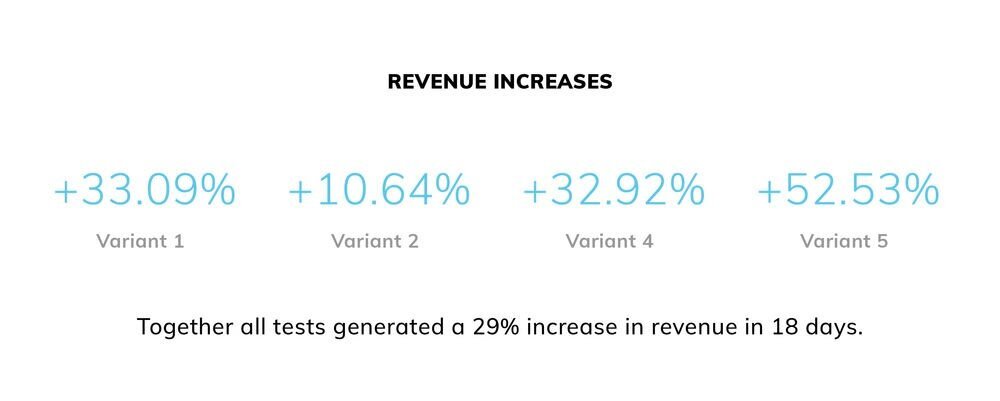This post was sponsored by 97th Floor. The opinions expressed in this article are the sponsor’s own.
Too often, there’s a belief in the business world that SEO efforts can’t be measured or related directly to revenue.
In reality, SEO efforts can and should be connected to bottom line metrics.
CRO (conversion rate optimization) is one often-overlooked method that can easily tie your business’s SEO efforts to the bottom line.
While CRO has often been categorized and thought of as a totally separate digital strategy from SEO, when used in conjunction, they become a powerful pair.
Why SEO & CRO Should Be Best Friends
SEO and CRO can actually be treated as two sides of the same coin when you’re building and growing your site. They work hand in hand:
- SEO gets users to your site.
- CRO helps users take action once they get to your site.
One without the other is only half of the story.
Why drive users to your site if it isn’t optimized for conversion? Why optimize your page if no one is coming to it?
Using SEO and CRO together allows you to pack the greatest punch in your digital efforts.
Start with an Audit
The first place to start in any campaign is with an audit. You need to know what you have before you can decide where you need to go.
KOIO is a 97th Floor client. We’d been working on SEO with them for a while, and seeing great increases in traffic.
However, they found themselves in a position where their content was driving traffic to their product pages, but only small percentage of that traffic was actually adding that product to their carts.
Why? We turned to testing to figure that out.
As always, the first place we began was with a comprehensive audit of their site.
We looked closely at their customer path to hypothesize the areas with the greatest potential for improvement and impact. Specifically, we looked for issues that might cause potential customers to bounce without adding product to their cart, especially concerning value propositions and CTAs.
We then used those findings to form hypotheses that we could test, placing them in order of most importance, and likelihood of effecting conversion rates. We then designed a campaign to put those hypotheses to the test. In this case, the path we chose was multivariate testing.

Testing
Forming the actual tests can seem daunting, but it’s actually pretty simple. And, think of those revenue numbers again – it’s so worth it.
After forming a hypothesis and strategy, you need to begin testing.
The first step is to set an appropriate timeframe to run the tests.
Next, remember to be efficient with your budgets as the tests are in progress: if some variations aren’t bringing in positive results, stop those tests and allocate that budget toward the tests that are showing promising improvements.
As KOIO’s tests were in progress, we carefully monitored the results for positive and negative trends so that we could pivot as needed.
For example, one hypothesis we tested was making “free shipping and returns” float, but a short period of testing quickly showed that it wasn’t bringing in any positive results, so we stopped that test and allocated the budget elsewhere.
Change Content to Follow Results
In the case of KOIO, their content had been previously optimized, and was already bringing in the traffic they needed. Often, however, this isn’t the case.
If your content isn’t optimized to bring in the traffic you need to see significant increases in revenue, once you’ve optimized your site for conversion using CRO, you need to turn to SEO tactics to make sure the content you produce is pushing people to those conversion pages.
Once again, we see how CRO and SEO work together. Content is one of the leading SEO methods in bringing traffic to a site, but be sure to do your due diligence in understanding what content will be the best fit for your customer base.
If you’re interested in learning more about the nuts and bolts behind these tests and the result, you can learn more here.
Analyze Your Results
Once the tests have been set and are running, you can usually pretty quickly see the results.
For KOIO, the highest of these increases was a jaw-dropping 28.5% jump in revenue.

Now, they can say that not only is their content bringing people to their site, but their site itself is converting those people. Their SEO efforts on both fronts can be clearly tied to the bottom line.
Not to mention the valuable insights they gained about what truly matters to their customers, insights that can guide future CRO testing and SEO efforts.
Wouldn’t you love to see this type of growth and these revenue numbers?
Of course you would!
CRO is too often overlooked as a viable partner to other important SEO efforts, when in actuality it has the potential to increase your conversion rates and demonstrate how SEO directly affects your company’s revenue.
With the combination of CRO and SEO, you can have a clear game plan based on solid data about how to maximize your efforts in the future.
If you’re interested in learning more about the nuts and bolts behind these tests and the result, you can learn more here.
Image Credits
Featured Image: Image by 97th Floor. Used with permission.
In-Post Photos: Images by 97th Floor. Used with permission.







